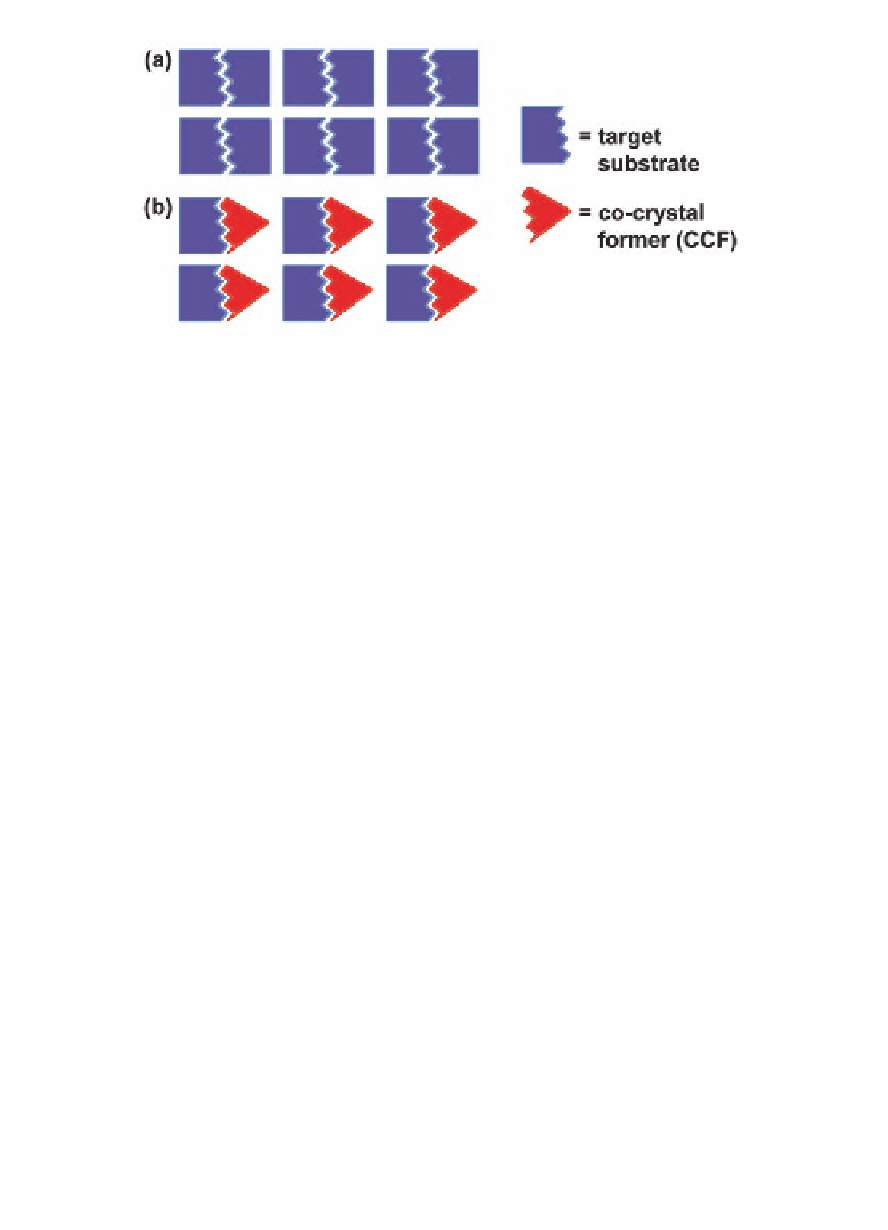Biology Reference
In-Depth Information
Scheme 7.2
Representation of (a) single-component solid and (b) co-
crystal.
7.3
Challenges to Control Reactivity and
Mobility
During the last decade, we have employed a co-crystal approach
togeneratefinitemolecularassembliesinthesolidstatethatare
designed to: (i) enable the control of chemical reactivity [4] and (ii)
afectchargemobility[5].Acommonthemeofthetwoareasisaneed
for methods that place aromatic molecules in face-to-face stacked
geometries with plane-to-plane separations in the order of 4 Å.
Fortheformer,pioneeringworkbySchmidthasshownthat
olefinswithpendantaromaticgroups(e.g.,cinnamicacids)tend
to undergo intermolecular [2 + 2] photodimerizations in the solid
state when adjacent carbon-carbon double (C=C) bonds lie parallel
andseparatedlessthan4.2Å(Scheme7.3)[7].Suchanapproach
to molecular synthesis is attractive since the cycloaddition reaction
can provide solvent-free and stereocontrolled access to molecules
that may, otherwise, be unavailable in the solution. For the latter,
itiswell-establishedthattheextentofface-to-faceπ-overlapof
semiconductormoleculesinthesolidstateplaysasignificantrole
infacilitatingtheefficientmovementofcharge(Scheme7.3)[8].
Being able to enforce face-to-face stacking of semiconductors (e.g.,
thiophenes, acenes) can, thus, provide access to solid-state materials
that exhibit appreciably high charge mobilities with applications
inareasrelatedtoflexibleorganicelectronics(e.g.,smartcards,
electronic paper) [9].

Search WWH ::

Custom Search